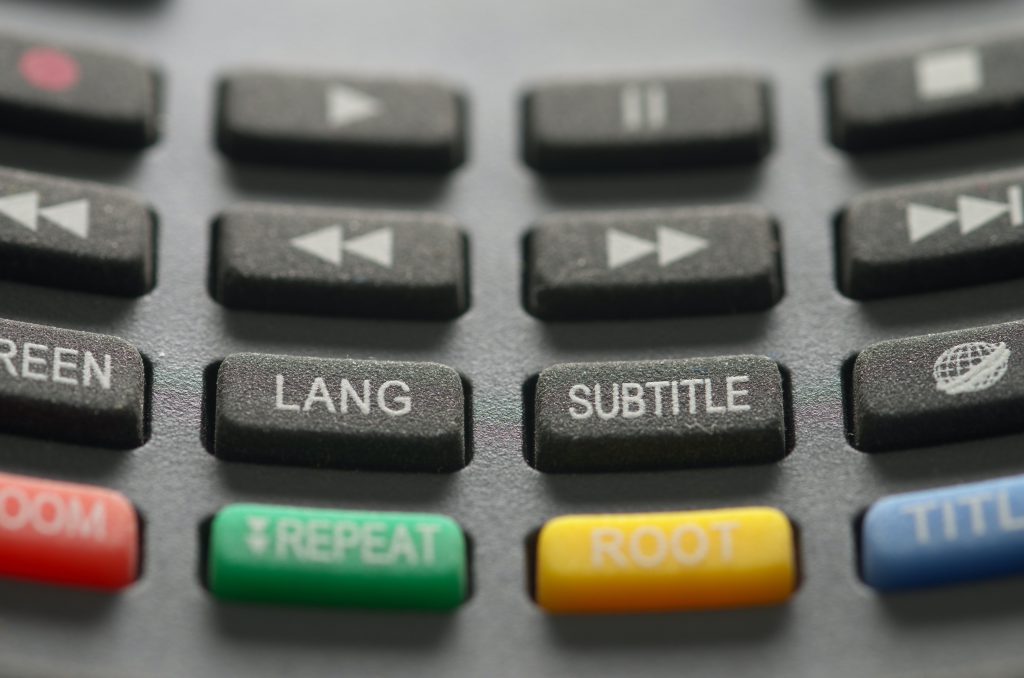You may not have a product or service that is geared directly toward those with disabilities. But perhaps you do. Either way, we know that video does a great job communicating and is the preferred way to reach people online. And we don’t want to exclude a part of the population from experiencing this.
How often do you think about the large portion of our population that lives with some disability? Have you ever thought about how you might design video for these people? What’s their experience like?
This post is part 1 of 3 in a brief series on creating video for those with disabilities. I’m no expert, but can at least offer some suggestions for creating video that’s more accessible. Our goal: to create content with Universal Design in mind. If you need more guidance or are interested in learning more, I’d recommend that you engage a specialist.
So, with that said, how can we make video accessible for those that are deaf or hard of hearing?
The Problem
There’s a broad range of difficulties that we refer to when we say “Deaf/Hard of Hearing.” This includes people that cannot hear anything at all, to those who use assistive hearing aids, to those with minor hearing loss. For the sake of this article, we might as well include those who struggle with English as a 2nd (or 3rd or 4th…) language, since accessible video will also help them succeed.
Someone who has difficulty with their hearing relies a lot on the visual world around them. Fortunately, video is a visual medium! This means that it’s of utmost importance to create clear visuals that make sense without any audio.
This conversation naturally begs the question: what makes good visual aesthetics? But you don’t have to worry about that – that’s our job. Instead, it should be your focus to tell a clear story without words or video that can survive with the audio muted. Think about watching a soccer game with the audio off – there’s a clear focus on what’s being communicated and where you should be looking.

Visual Text
One of the simplest ways to help those who struggle with hearing is to create captions for your video. Captions with a distinguishing background, large enough to be easily read over your video. You can also create a transcript for someone to follow along with. It’s pretty simple to do this!
Don’t just write dialogue in your captions/transcript, but all sounds. If it’s important for someone to understand, then put it in your captions. Doors opening off-screen or the sounds of car crashes happen a lot & are especially helpful to transcribe.
If you use YouTube to host your videos, your search results will actually rank higher and help you reach more people if you take advantage of the caption feature.
And get creative! You may choose to create an animated video instead of one that’s live action. In that case, you could use text as an essential part of your video. There’s lots of freedom here!

Clear Design
Since visuals are so important to those who struggle with hearing, it’s very important to create calm, clear design. Ensure that things are easy to see and not super dark. Make sure there aren’t any distracting hotspots or flashing parts of the video that aren’t essential. Minimize eye strain.
In theory, this should already be happening in video, but isn’t always the case. Keep this in mind to further clarify to your viewer what it is that they’re watching and what is happening.

Thoughtful Audio
As we previously stated, some people who struggle with hearing use assistive aids or have some minor hearing loss. That means that they’re still going to comprehend your audio pretty well.
In this case, make sure that your audio is mixed well, without unnecessary background noise. You want your dialogue to come out clean and clear, rather than be muddied with your music. If you feel like it could be hard for some viewers to understand your video, it probably is.
You know those movies where an explosion goes off and there’s a high-pitched ringing that lasts for several seconds? That won’t be helpful for accessibility. Remove any spikes or sudden changes in audio that aren’t necessary to the video; at the very least, make it obvious with your visuals that there is going to be a change in audio.
If you simply consider what it might be like to have difficulty with hearing & watch your video, you’ll start making choices that lend your video to more accessibility.
Final Tips
There’s nothing stopping you from going really outside the box. Why not do your entire video in sign language? Or remove dialogue entirely?
I’d recommend that you review the DO-IT Center at University of Washington. They have some great resources and more to say around this topic
If you start thinking about how to make your video more accessible from the start, you’ll be opening the doors to a wider potential audience. And they won’t feel shoehorned in, as you’ll be designing with accessibility as a focus in the beginning.
Good luck! Don’t be afraid to engage a specialist for further help.


